
24-12-2025 17:08
Hulda Caroline HolteHello, I have found this propoloid ascomycete on

21-12-2025 09:32
Hello.A tiny ascomycete found embedded in wood in

21-12-2025 21:32
Pol DebaenstHello, Garden, Burgweg 19, Veurne, BelgiumOn 10/1

22-12-2025 23:38
Patrice TANCHAUDBonsoir, récolte sur un mur en pierre, apothéci

22-12-2025 00:47
Patrice TANCHAUDBonsoir, récolte à proximité du milieu dunaire
En Hojas de Acer y Pistacia
Salvador Tello,
09-03-2013 14:41
He encontrado este ascomiceto creciendo sobre hojas secas de Acer monspessulanum y Pistacia terebinthus. Es de forma mas o menos globosa, de hasta 0,5 mm, con un pequeño pié. Tiene Ascas biseriadas de (56,04) 63,33 - 88,72 (94,48) x (15,39) 15,77 - 19,71 (20,08) µm. Esporas con forma de semicirculo, de color marrón, más claro en la base, con algunas gútulas en el interior y un largo apéndice en los extremos. La medida de las esporas sin contar los apéndices son estas. (14,48) 15,41 - 17,27 (19,25) x (6,64) 7,17 - 8,35 (9,01) µm
¿Alguien lo conoce o tiene alguna idea de por donde buscar?
Gracias.
Saludos.
Salvador.
Rodríguez López Armando,
09-03-2013 15:29
Re : En Hojas de Acer y Pistacia
Hola Salvador:
Esas esporas me recuerdan al género Lambertella.
Un saludo, Armando.
Esas esporas me recuerdan al género Lambertella.
Un saludo, Armando.
Salvador Tello,
09-03-2013 16:44
Re : En Hojas de Acer y Pistacia
Gracias Armando.
No Puede ser Lambertella, no es un Discomycete. En un principio pensé que sería un Mixomiceto del género Trichia, no vi que era un ascomiceto hasta que lo miré al microscopio y vi que todas la esferas contenían ascas y esporas.
SaLudos.
Salvador.
No Puede ser Lambertella, no es un Discomycete. En un principio pensé que sería un Mixomiceto del género Trichia, no vi que era un ascomiceto hasta que lo miré al microscopio y vi que todas la esferas contenían ascas y esporas.
SaLudos.
Salvador.
Miguel Ángel Ribes,
11-03-2013 13:26

Re : En Hojas de Acer y Pistacia
Cuando nadie te da ni siquiera una pista del género (aparte de Lambertella), es que has debido de encontrar la joya de la corona.
¿?
Suerte
¿?
Suerte
Salvador Tello,
11-03-2013 15:19
Re : En Hojas de Acer y Pistacia
Pues hace ilusión encontrar algo raro, aunque es una pena el no poder saber lo que es. Bueno, guardaré material.
Saludos.
Salvador.
Saludos.
Salvador.
Hans-Otto Baral,
11-03-2013 22:08

Re : En Hojas de Acer y Pistacia
Walter Jaklitsch wrote me on this fungus:
"Most probably something new. Not surprising due to the substrates / geography.
Could it be a disco that opens very slowly? [I don't think so, because of the ascus shape]
The only similar spores that came to my mind, but are more lunate, are conidia of Arthrinium cuspidatum (California, other host).
The spores are made of a single cell, i.e. the „horns" are not appendages, unlike Sordariales I know. [my guess was Sordariales]
Galeate, but tiny spores occur in 3 groups, which are all different (yeasts, Eurotiales, Ophiostomataceae)."
Zotto
"Most probably something new. Not surprising due to the substrates / geography.
Could it be a disco that opens very slowly? [I don't think so, because of the ascus shape]
The only similar spores that came to my mind, but are more lunate, are conidia of Arthrinium cuspidatum (California, other host).
The spores are made of a single cell, i.e. the „horns" are not appendages, unlike Sordariales I know. [my guess was Sordariales]
Galeate, but tiny spores occur in 3 groups, which are all different (yeasts, Eurotiales, Ophiostomataceae)."
Zotto
Raúl Tena Lahoz,
12-03-2013 00:16

Re : En Hojas de Acer y Pistacia
Hi all
Maybe the solution is here:
http://www.sciencedirect.com/science/article/pii/S095375629680150X
Galán & Prieto (in "Lambertella palmeri Raitv. & R. Galán descubierta en el continente europeo", Bol. Soc. Micol. Madrid 28, 2004, pp. 161-167, see attach) compare the spores of Lambertella palmeri to those of Bicornispora exophiala and they talk about elipsoid biseriate asci. I don´t have access to the Mycological Research paper, but if somebody has it, then we could see if it is the same species. It is said to be found on Cytisus purgans.
Cheers,
Raúl
Maybe the solution is here:
http://www.sciencedirect.com/science/article/pii/S095375629680150X
Galán & Prieto (in "Lambertella palmeri Raitv. & R. Galán descubierta en el continente europeo", Bol. Soc. Micol. Madrid 28, 2004, pp. 161-167, see attach) compare the spores of Lambertella palmeri to those of Bicornispora exophiala and they talk about elipsoid biseriate asci. I don´t have access to the Mycological Research paper, but if somebody has it, then we could see if it is the same species. It is said to be found on Cytisus purgans.
Cheers,
Raúl
Salvador Tello,
12-03-2013 00:25
Re : En Hojas de Acer y Pistacia
Hola Zotto.
Ya se ha puesto en contacto conmigo Walter y se lo voy a mandar para que el lo cultive y estudie, seguro que el nos saca de dudas.
Por lo que yo he visto no es un discomycete que abre tarde, los que se ven abiertos ya no tienen ascas y los que están cerrados tienen dentro ascas inmaduras, maduras y muchas esporas maduras.
Gracias por tu aclaración sobre los cuernos y los demás comentarios.
Saludos.
Salvador.
Ya se ha puesto en contacto conmigo Walter y se lo voy a mandar para que el lo cultive y estudie, seguro que el nos saca de dudas.
Por lo que yo he visto no es un discomycete que abre tarde, los que se ven abiertos ya no tienen ascas y los que están cerrados tienen dentro ascas inmaduras, maduras y muchas esporas maduras.
Gracias por tu aclaración sobre los cuernos y los demás comentarios.
Saludos.
Salvador.
Salvador Tello,
12-03-2013 00:42
Re : En Hojas de Acer y Pistacia
Gracias Raúl.
Pues esperamos a ver si alguien tiene acceso para comparar.
Saludos.
Salvador.
Pues esperamos a ver si alguien tiene acceso para comparar.
Saludos.
Salvador.
Gernot Friebes,
12-03-2013 10:16
Re : En Hojas de Acer y Pistacia
Hi,
the description of Bicornispora exophiala in Checa et al. (1996) fits quite perfectly! The only difference being in ascospore (60-65 x 8-10 µm) and ascus size ("90-120 x 25-30 µm, stipe 30-35 µm in length"). Maybe you have a new species of Bicornispora, given those differences.
Is it legal to attach the article here?
Best wishes,
Gernot
the description of Bicornispora exophiala in Checa et al. (1996) fits quite perfectly! The only difference being in ascospore (60-65 x 8-10 µm) and ascus size ("90-120 x 25-30 µm, stipe 30-35 µm in length"). Maybe you have a new species of Bicornispora, given those differences.
Is it legal to attach the article here?
Best wishes,
Gernot
Jaklitsch Walter,
12-03-2013 10:49
Re : En Hojas de Acer y Pistacia
wow, yes, that´s it. Great! A real Spanish inhabitant, obviously occurring on several different substrates. I was already thinking of Coryneliales, where they place the genus, but missed it (must be the flu). Congratulations, Walter
Sizes are a bit but not so much different.
Salvador: did you include the ascus stipe in your measurements?
If the horns are as long as the body, then spore length approaches the described one.
Sizes are a bit but not so much different.
Salvador: did you include the ascus stipe in your measurements?
If the horns are as long as the body, then spore length approaches the described one.
Raúl Tena Lahoz,
12-03-2013 11:08

Re : En Hojas de Acer y Pistacia
Hi all
Yes it would be good if Salva could confirm sporal and asci measurements, but as Gernot says it maybe can be a different species if differences are still there. Also culture should have to be checked in order to compare anamorph. I have contacted with Galán who will contact Checa.
Cheers,
Raúl
Yes it would be good if Salva could confirm sporal and asci measurements, but as Gernot says it maybe can be a different species if differences are still there. Also culture should have to be checked in order to compare anamorph. I have contacted with Galán who will contact Checa.
Cheers,
Raúl
Salvador Tello,
12-03-2013 13:52
Re : En Hojas de Acer y Pistacia
Gracias Gernot y gracias también a todos.
Las medidas de las ascas son estas.
(56,04) 63,33 - 88,72 (94,48) x (15,39) 15,77 - 19,71 (20,08) µm
Q = (2,96) 3,32 - 5,00 (5,45) ; N = 26
Me = 74,14 x 17,65 µm ; Qe = 4,23
Esporas.
(28,87) 34,38 - 40,16 (42,54) x (7,34) 7,99 - 11,75 (13,28) µm
Q = (2,76) 3,20 - 4,58 (5,27) ; N = 35
Me = 36,81 x 9,82 µm ; Qe = 3,82
Cuernos.
(4,50) 7,74 - 11,49 (13,68) µm
Las medidas de las ascas son estas.
(56,04) 63,33 - 88,72 (94,48) x (15,39) 15,77 - 19,71 (20,08) µm
Q = (2,96) 3,32 - 5,00 (5,45) ; N = 26
Me = 74,14 x 17,65 µm ; Qe = 4,23
Esporas.
(28,87) 34,38 - 40,16 (42,54) x (7,34) 7,99 - 11,75 (13,28) µm
Q = (2,76) 3,20 - 4,58 (5,27) ; N = 35
Me = 36,81 x 9,82 µm ; Qe = 3,82
Cuernos.
(4,50) 7,74 - 11,49 (13,68) µm
Me = 9,53 µm
Yo veo bastante diferencia, así que no sería raro que fuese otra especie.
Gernot, yo no se si es legal unir el artículo aquí, pero te agradecería mucho si me lo puedes enviar al privado ajoporros@yahoo.es
Raul, estoy a la espera de lo que te digan Galán y Checa.
Saludos.
Salvador.
Chris Yeates,
12-03-2013 19:23

Re : En Hojas de Acer y Pistacia
for the advantage of those following this thread of a particularly beautiful-spored asco:
Björn Wergen,
12-03-2013 19:41

Re : En Hojas de Acer y Pistacia
That is a crazy species, with an amazing spore shape. I have never seen this before.
regards,
björn
regards,
björn
Salvador Tello,
12-03-2013 19:53
Re : En Hojas de Acer y Pistacia
Bueno, por estar poco familiarizado con la terminología (por mi poca experiencia) y mi falta de conocimientos de idioma, he interpretado mal las palabras de Walter y Gernot y he confundio stipe con Cuernos en vez de pié, así que voy a editar mi mensaje anterior por que me pongo rojo cada vez que lo veo.
Saludos.
Salvador.
Saludos.
Salvador.
Salvador Tello,
12-03-2013 19:55
Re : En Hojas de Acer y Pistacia
Gracias por adjuntar el artículo Chris.
Saludos.
Salvador.
Saludos.
Salvador.
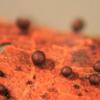
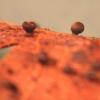
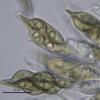
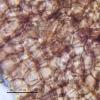
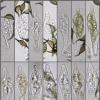
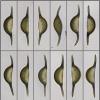
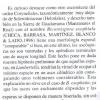
 Bicornispora1996-v100-p500-0001.pdf
Bicornispora1996-v100-p500-0001.pdf